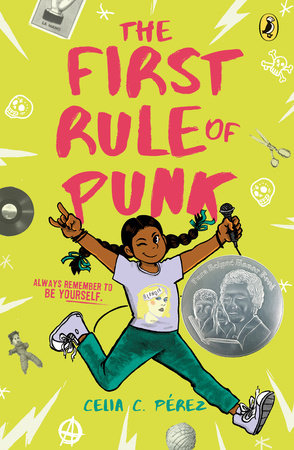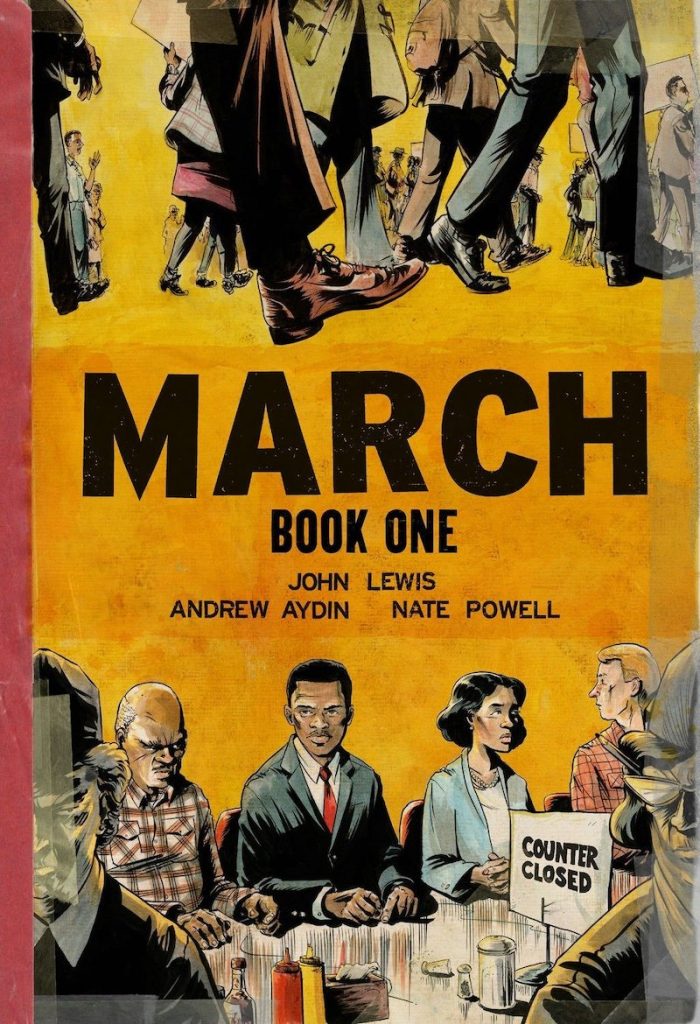Selecting Novels to Encourage Reader Engagement
Dara Carlson
At Drachman Montessori K-8 Magnet School in Tucson, we wanted to expand the variety and quality of novels read by middle school students. Our population of students is majority Latinx, but overall, very diverse. A significant percentage of students identify as immigrants and refugees. Many are emerging bilinguals and trilinguals. The culture of our Montessori community is one that embraces and celebrates the diversity of students and families. We seek to learn from one another and our differing experiences. As teachers, we feel that students are best served when we reflect their diversity in the literature that we offer.
We try to give our 6th-8th grade students a choice of the novel they read each quarter, so we hope to have 3-4 different titles available for them to choose from in selecting one to read. Within this selection, we strive to provide a representation of different perspectives, cultures, and life experiences in the books. The books must also fit into the theme we are studying with some connection to the content being explored in either social studies, science, or language arts. And, given the variety of learners in our mixed-grade classrooms, we need books with different levels of complexity within the same selection. The task of finding the perfect grouping of age/school-appropriate, on-theme, diverse, engaging novels for readers of different strengths is time consuming. And while many titles are available to us through our district, our goal was to invest in titles that were not readily available so that we could have them as a part of our middle school collection. In our teacher study group, we spent time talking about and researching potential titles and deciding which ones to make available to students. Then we reached out to departments in our district and libraries at other schools to see what was available to borrow and what needed to be purchased.
Our themes and novel selections for each quarter are outlined below:
- Cycle 1 (Forces): Sophia’s War, Refugee, Chains
- Cycle 2 (Structures): Fahrenheit 451, The First Rule of Punk, The Last Book in the Universe
- Cycle 3 (Power): The Afterlife, March (The Trilogy)
- Cycle 4 (Change): Ender’s Game, Monster, The Giver, Gathering Blue
In our language arts curriculum, students spend half of each cycle reading short stories or poems and half reading a novel selected from the options. No matter what they are reading, they do a reading response each day on Monday through Thursday. There are eight different responses for them to choose from, and we teach students how to do each response at the beginning of the year. They can choose which response to do for their daily reading, but they must cycle through all eight before they can repeat a response. Their eight responses are:
- Retell (a summary)
- Freewrite (any thoughts, reflections, or connections to the reading)
- Poem (create an original poem)
- Letter to a Character (write a letter to one of the characters)
- Transcribe a Quote (and reflect on the importance/meaning of the quote)
- Character Timeline (writing both the events of the book and how the protagonist was feeling during each event)
- Sketch a Significant Image (an image in your mind from the story)
- Describe a Significant Image (an image in your mind from the story)
Many teachers also do daily novel discussions, read alouds to help students stay caught up with the reading, and reading response workshops. These workshops provide more structure and guidance as a small group of students work on their reading response together. These different engagements help students enjoy the book.
 In our work with students, we found that engagement was highest with non-traditional books. These books differed from the “typical” novel read in school in that some were graphic novels like March and others were novels taking place in the contemporary world like The First Rule of Punk. The First Rule of Punk was probably the most popular title, indicating student preference for contemporary fiction over historical fiction. There are pop culture references in this book that students enjoyed incorporating into the classroom community. One class even created a class playlist of the Latinx punk songs characters talked about in the book. Of all the reading responses, Sketch an Image is always a student favorite, and for this novel they drew imaginary flyers for the unauthorized punk show discussed in the novel.
In our work with students, we found that engagement was highest with non-traditional books. These books differed from the “typical” novel read in school in that some were graphic novels like March and others were novels taking place in the contemporary world like The First Rule of Punk. The First Rule of Punk was probably the most popular title, indicating student preference for contemporary fiction over historical fiction. There are pop culture references in this book that students enjoyed incorporating into the classroom community. One class even created a class playlist of the Latinx punk songs characters talked about in the book. Of all the reading responses, Sketch an Image is always a student favorite, and for this novel they drew imaginary flyers for the unauthorized punk show discussed in the novel.
 The biggest struggle was engaging students in the historical background of the books. March is a nonfiction trilogy of graphic novels about the Civil Rights movement based on the experiences of U.S. Congressman John Lewis. While reading the trilogy, teachers showed videos of many of the historical moments described in the novels, such as the March on Washington. Students also listened to famous songs that came out of the Civil Rights era. These strategies, along with frequent novel discussions to clear up confusions, helped boost engagement with the novels.
The biggest struggle was engaging students in the historical background of the books. March is a nonfiction trilogy of graphic novels about the Civil Rights movement based on the experiences of U.S. Congressman John Lewis. While reading the trilogy, teachers showed videos of many of the historical moments described in the novels, such as the March on Washington. Students also listened to famous songs that came out of the Civil Rights era. These strategies, along with frequent novel discussions to clear up confusions, helped boost engagement with the novels.
Teachers also found that it was helpful to leave Friday as a “catch-up” day for reading instead of assigning new pages. Friday gave students who were behind a reason to keep reading and reasonably expect to be able to get caught up, instead of giving up because they were too far behind. Students who were not behind on their reading worked on other assignments. Being a Montessori school, students have large work blocks where they can independently choose the assignments they want to work on from any subject.
Our goal was to incorporate more guest speakers for students this year, but for a variety of reasons, we managed only one meaningful guest speaker experience, listening to a Holocaust survivor. We walked to the Jewish History Museum and Holocaust Center in downtown Tucson. After exploring the museum, students heard from a survivor who visited us at the museum. They shared their life experiences, including before, during, and after the Holocaust, and then students asked questions. Middle school students can be a tough audience, but while interacting with the speaker, they were extremely attentive, respectful, and curious. It was by far one of the best educational experiences we had all year. This visit was incorporated under the Cycle 3 theme of power.
Based on our experiences, our study group has two main takeaways. First, we want to incorporate more contemporary realistic fiction into our literature selections. These books are what students engaged with the most, and engagement is always our number one goal. Second, we want to schedule more guest speakers. Having people share their lived experiences is an authentic way of learning and students are more likely to remember what they learned than from receiving the information in a traditional format. Overall, it was a successful school year, and we are so grateful that we could invest in text sets that will be used for years to come.
Children’s Literature Cited
Anderson, L.H. (2011). Chains. Atheneum.
Avi (2012). Sofia’s war. Beach Lane.
Bradbury, R. (1953). Fahrenheit 451. Ballantine.
Card, O.S. (1985). Ender’s game. Tor.
Gratz, A. (2017). Refugee. Scholastic.
Lewis, J., Aydin, A., & Powell, N. (2013). March (Trilogy). Top Shelf Productions.
Lowry, L. (2000) Gathering blue. Houghton Mifflin.
Lowry, L. (1993) The giver. Houghton Mifflin.
Myers, W.D. (1999) Monster. HarperCollins.
Pérez, C.C. (2018). The first rule of punk. Penguin.
Philbrick, R. (2000). The last book in the universe. Scholastic.
Soto, G. (2003). The afterlife. HarperCollins.
Dara Carlson is the Montessori Lead Teacher in the Drachman Montessori K8 Magnet Middle School in Tucson, Arizona.
Authors retain copyright over the vignettes published in this journal and grant the journal right of first publication with the work simultaneously licensed under the following Creative Commons License:

WOW Stories, Volume X, Issue 3 by Worlds of Words is licensed under a Creative Commons Attribution-NonCommercial-ShareAlike 4.0 International License.
Based on work at https://wowlit.org/on-line-publications/stories/volume-x-issue-3-fall-2022/3.
WOW stories: connections from the classroom
ISSN 2577-0551

Hello,
I really enjoy reading the reviews and this website. I am wondering what are
the guidelines for :
the review board member selection in different sections
review guidelines for a reviewer
I checked for the contact info for reaching review board member (s) but was not able to locate it or missed it.
Thanks
Thank you for leaving a comment on your question. You can find the review guidelines and other online forms at ” http://wowlit.org/on-line-publications/stories/storiesguide/ “.
Thanks,
yoo kyung